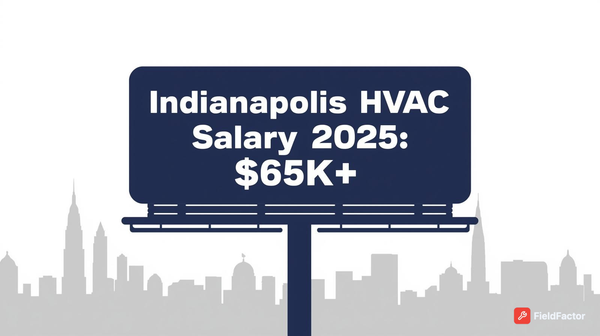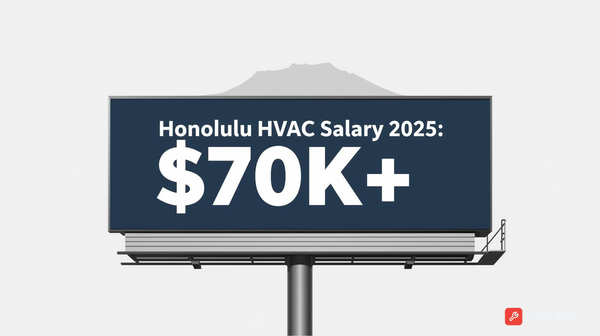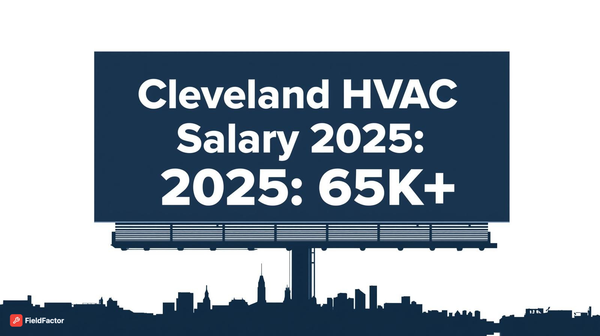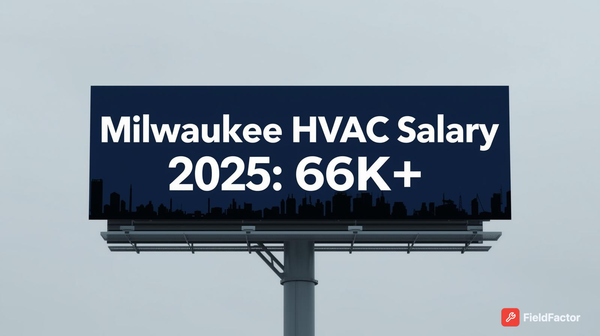Your $15K Recruiter Fee is Wasted: How Smart HVAC Owners Hire Talent in the 2025 Labor Crunch
Job boards are broken. See the 3 proven strategies smart HVAC owners use to hire top techs in 2025: internal referrals, trade school partnerships, and tech-driven efficiency.

The scene is the same in every trade forum: A contractor posts about needing two techs, and the comments explode with frustration. Job boards yield one or two underqualified resumes a week, and even after raising wages, the phone isn't ringing with talent.
If you’re struggling to hire, it’s not just you. The HVAC labor shortage is real, and it’s being fueled by an aging workforce and surging consumer demand. This isn't a problem you can solve with one better job post; it requires adapting your entire business model.
Here is a reality check on the hiring crunch and the actionable strategies smart contractors are using to adapt.
1. The Reality of the HVAC Hiring Crunch
The facts confirm your frustration: The Bureau of Labor projects continuous growth for HVAC technicians (over 5% growth in the next decade). However, the supply is stuck:
- Experienced Techs Are Loyal (and Stuck): Top-tier, experienced technicians are comfortable, well-paid, and often loyal to their current employer. A small pay bump won't move them; they value training, culture, and a reliable schedule more than a tiny hourly raise.
- The School Pipeline is Dry: Trade schools and vocational programs are simply not producing enough graduates to keep pace with demand and replace retiring technicians.
- The Skills Gap is Widening: When you do get a new hire, they often require extensive on-the-job training, which strains your most experienced (and most valuable) senior techs.
2. Why Old Recruiting Methods Don't Deliver
If you're still relying on recruiters or general job boards, you are wasting time and money fishing in a crowded, low-quality pond.
Why Recruiters Often Don’t Deliver
HVAC recruiting is hyper-local and relationship-driven. Recruiters rarely have a deep, trusted trade talent pool. You often pay a steep $15,000 to $20,000 fee for a minimal result, only to find the new hire leaves after six months.
Why Job Boards Are Drying Up
Everyone is fishing in the same pond. General job boards like Indeed and ZipRecruiter are saturated. You get a flood of low-quality applicants who click "apply" without credentials, forcing your office manager to waste hours filtering noise instead of managing customers.
3. What Actually Works in 2025: The New Playbook
The solution isn't outside your company; it's about leveraging your existing assets—your team, your culture, and your relationships.
- 🔥 Employee Referral Programs: This is your #1 source of quality hires. Pay existing technicians $500 to $1,000 for bringing in qualified hires. Better yet, split the payment: half on hire, half after the new tech reaches the six-month mark. This ensures loyalty and quality control.
- Trade School Partnerships: Get out of the office and into the school. Build relationships with local trade instructors, offer to sponsor a class or donate tools, and set up a consistent apprenticeship or pre-hire program. Get them before they graduate.
- Social Media & Community Groups: Your best potential hires aren't scrolling LinkedIn; they are hanging out in Facebook groups, subreddits, and local trade Discord servers. Have your most charismatic tech post genuinely about the team culture, training, and the growth path.
- Retention > Recruitment: The best recruiting strategy is to keep the great people you already have. Offer better scheduling, clear career growth paths, and continuous training. A tech who feels respected and avoids weekend burnout is a tech who stays.
4. The Pay Question (Balancing Wages and Efficiency)
The Reddit discussions confirm that experienced pros won't move for $3–$5 more per hour—they need a substantial jump or a major quality-of-life improvement.
Contractors must find a way to offer competitive, high wages without bankrupting the business. This means you must balance higher payroll with efficiency gains.
If you pay a technician $10/hour more, you must find a way to ensure they are 30 minutes more productive every single day. This brings us to the ultimate long-term solution.
5. The Bigger Picture: Adapting Your Business Model with Tech
When labor is scarce, you must leverage software, automation, and scheduling technology to do more work with fewer people.
- Automate Lead Qualification: Stop paying technicians' wages for your CSR to manually transcribe voicemails, enter addresses, or filter tire-kickers. Use AI and text-to-capture systems to automatically log leads into ServiceTitan or Jobber, ensuring your team only spends time on booked jobs.
- Optimize Tech Routes: Use smart scheduling software to shave minutes off every route, reducing fuel costs and the high cost of drive time.
- Focus on Retention: Automated communication tools (like FieldFactor) take the pressure off your field crew by handling follow-ups, confirmations, and reminders, freeing up your techs to focus on the repair.
The future of the trade business is not hiring your way out of the crisis—it's automating your way to a more efficient, profitable operation that your existing techs are proud to be part of.
Struggling to hire? At Field Factor, we’re building playbooks and tools that help HVAC businesses grow even when labor is scarce.
Subscribe for hiring strategies, AI tools, and industry insights.





